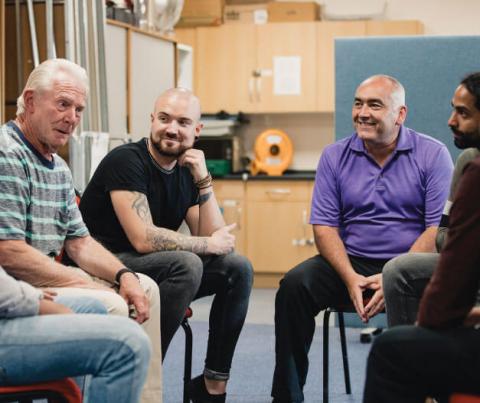
Communications + Awareness Building
Rationale
United Way benefits from a generally positive perception as most of the U.S. public understand that our impact work is focused on engaging community residents to help people live better lives. United Way continually ranks as one of the United States’ top charities. Our way of doing business means that United Way has ongoing access to diverse audiences that engage in our work as donors, partners (funded and unfunded), advocates, and volunteers. Most United Ways are viewed as trusted organizations who can be relied upon to share data and stories that convey how the community is faring overall. Many United Ways are also effective at creating compelling individual narratives that illustrate their impact on education, economic mobility, and health.
Communications and Awareness-building has a tremendous impact on the success of equity efforts. Ensuring that a variety of constituencies that span sectors and spaces (corporate, nonprofit, public, community) have a meaningful understanding of both equity challenges and equitable solutions provides a critical foundation from which to foster collaboration, advocacy, and mobilization. Talking about equity and racial equity can be challenging. They are topics that many of us are socialized to avoid because they can make us feel uncomfortable. Developing consistent communications to drive greater awareness can assist in strengthening a community-wide movement for equity,
encouraging the leadership of your board to advocate for equity, and informing grantmaking and resource allocation that drives more equitable outcomes. Utilizing data in communications to build a narrative related to equity is one example of how communications can benefit equity efforts at your United Way. Awareness-building can be a tool to support the success of other equity levers such as Community Mobilization and Engagement.
The nature of your awareness-building activities will depend considerably on your local context. This includes how advanced conversations about equity are, how comfortable individuals and groups feel about engaging in conversations around equity, and whether or not there is a shared understanding of how inequity is expressed in your local context.
Awareness-building can be a long process. Intentionally leveraging strategic communications tactics is often an important first step in an equity effort though ultimately, communications and awareness-building are ongoing processes.
These Assets Can Be Leveraged To Advance An Equity Agenda
- Our access to diverse audiences allows us to reach them with tailored messaging that connects the need to close disparities and gaps with the issues that they care most about (e.g. affordable housing, jobs, education).
- United Ways, who are trusted purveyors of community information, can leverage this credibility to purposefully share data and stories that highlight the causes of past and current inequities and articulate possible solutions.
- United Ways who develop and publish reports to the community can use this opportunity to present current data on disparities, as well as link them to specific policies, practices, beliefs, and community conditions.
- United Ways can use their multiple communication channels (online, print, social media, in-person) to place individual success stories within a broader historical, community, economic, and social context.
- Community engagement activities led by United Ways and/or partners (conversations, forums, focus groups) can be prime opportunities to heighten awareness on how specific issues are impacting different groups in the community.
- United Ways can use their relationships in the community and multiple communication channels to create spaces for residents to share their own experiences and shift the framing of the work so that community members are building their narratives themselves.

